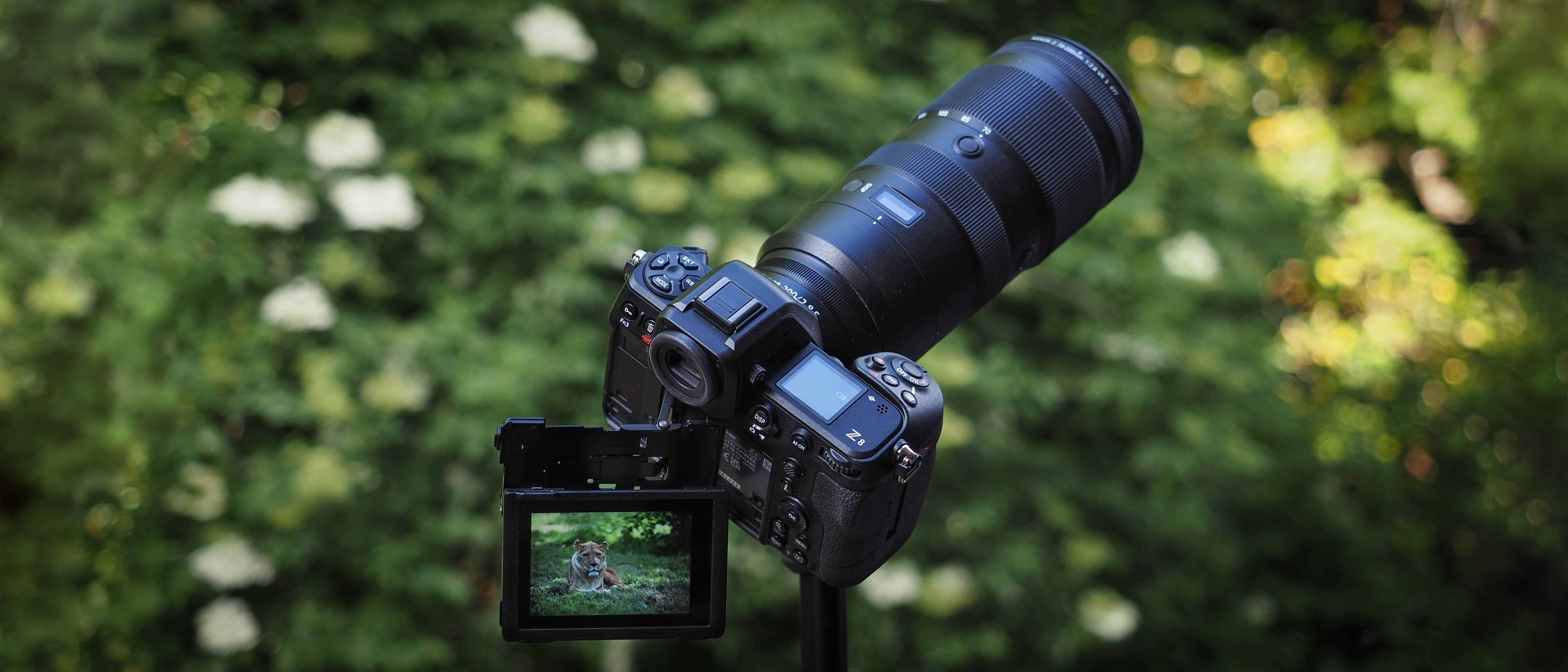Live Science Verdict
With all the power and performance of the flagship Z9, but in a smaller and cheaper body, the Nikon Z8 is a market-leading mirrorless camera.
Pros
- +
45.7MP resolution
- +
Up to 120fps bursts
- +
8K 60p video
- +
Killer autofocus
Cons
- -
Battery could be better
- -
120fps is only 11MP
- -
No articulating screen
- -
Occasional AF flaws
Why you can trust Live Science
Type: Mirrorless
Sensor: 45.7MP full frame
Lens mount: Nikon Z
ISO range: 64-25,600 (exp 32-102,400)
Viewfinder: Electronic, 3.69m dots
Video capability: 8K 60p / 4K 120p
Weight: 2lbs 0.1oz
Size: 56.7 x 46.5 x 32.7 inches
Memory card: 2x CFexpress B
The Nikon Z8 is referred to by Nikon as both "a baby Z9" and "the true successor to the Nikon D850". That’s high praise indeed, with the Z9 being the company’s cutting-edge, flagship mirrorless camera, and the D850 being widely regarded as the finest DSLR ever made.
Both labels are wholly accurate, though, as the Nikon Z8 lives up to every inch of the hype. With 45.7MP resolution, 8K 60p video and up to 120fps burst shooting, this can handle almost anything you throw at it; its continuous shooting speed and ferocious autofocus obviously make it one of the best wildlife cameras on the market, but it’s also an absolute powerhouse for anything from astrophotography to portraiture.
In fact, the Z8 is so good that it threatens to make the pricier, bulkier Z9 redundant. Unless you really need the vertical grip and beefier battery power (both of which are actually available to the Z8, if you buy an additional grip), there really isn’t much to justify the extra grand or so that the flagship will cost you.
There are asterisks next to a couple of features, such as the fact that the 120fps bursts are limited to 11MP JPEGs, but all in all the Z8 can tackle any task – and it’s probably the best all-purpose camera that Nikon has ever made.

Nikon Z8: Design
When Nikon calls this a "baby Z9", it isn’t kidding: while it packs the exact same technology as its big brother, the Z8 eschews the integrated vertical grip to deliver a camera body that’s a similar size to the Nikon Z6 and Z7.
Taking a cue from Sony, this is the first flagship from Nikon (or Canon, for that matter) to offer a pro body without the vertical grip – in turn, making it appealing to a much broader market. Sure, if you’re going to be using it with big bulky primes or long telephoto lenses, the Z9 balances better. But for everyday and all-purpose shooting, I’m a much bigger fan of this smaller footprint. Mirrorless is supposed to be smaller and lighter than DSLRs, after all!
As you’d expect from a Nikon, the ergonomics are sublime; the Big N really knows how to make a camera that fits your hand like a glove. The controls feel premium and are positioned just where your fingers and thumbs expect them, and shooting with the Z8 is a dream. It also features a great in-body image stabilization system that delivers up to 5.5 stops of compensation (6 stops with specific lenses).
My only complaint here is that the camera doesn’t feature a fully articulating touchscreen, instead opting for a curious four-way tilting option. This certainly gives more flexibility than a standard tilt-only screen, but not being able to flip the screen all the way round is a sore point when shooting video – and extra baffling, given what a video powerhouse the Z8 is.
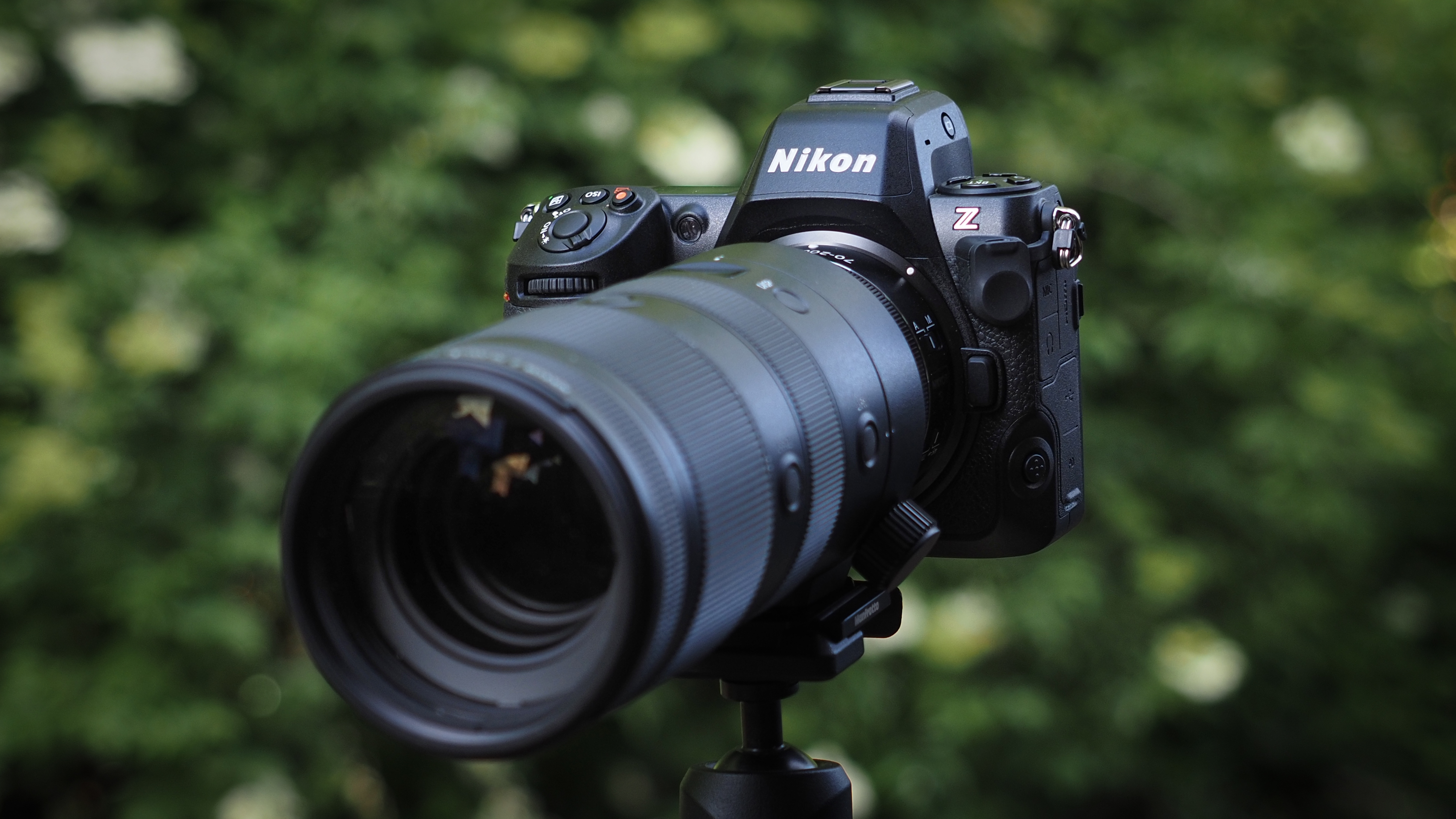
The tilting screen is fantastically bright and detailed with good color reproduction even when comparing it to our 99% Adobe RGB color monitor in the studio but it's the restrictions of its tilting function which frustrate us a little.
Tilting the screen to the right and upwards from a normal shooting position we get around 180 degrees and about 200 degrees of movement respectively which is great for composing scenes with awkward shooting angles (such as framing foreground elements when capturing astrophotographs). However, the left and down tilt give little more than 30 or 45 degrees respectively.
We're presuming that Nikon's thinking here is that it's more awkward to hold a camera in those latter positions and trigger the shutter release button, but it's a little confusing as to why they didn't opt for a fully rotating vari-angle style screen that competitor models like the Canon EOS R5 have as default.
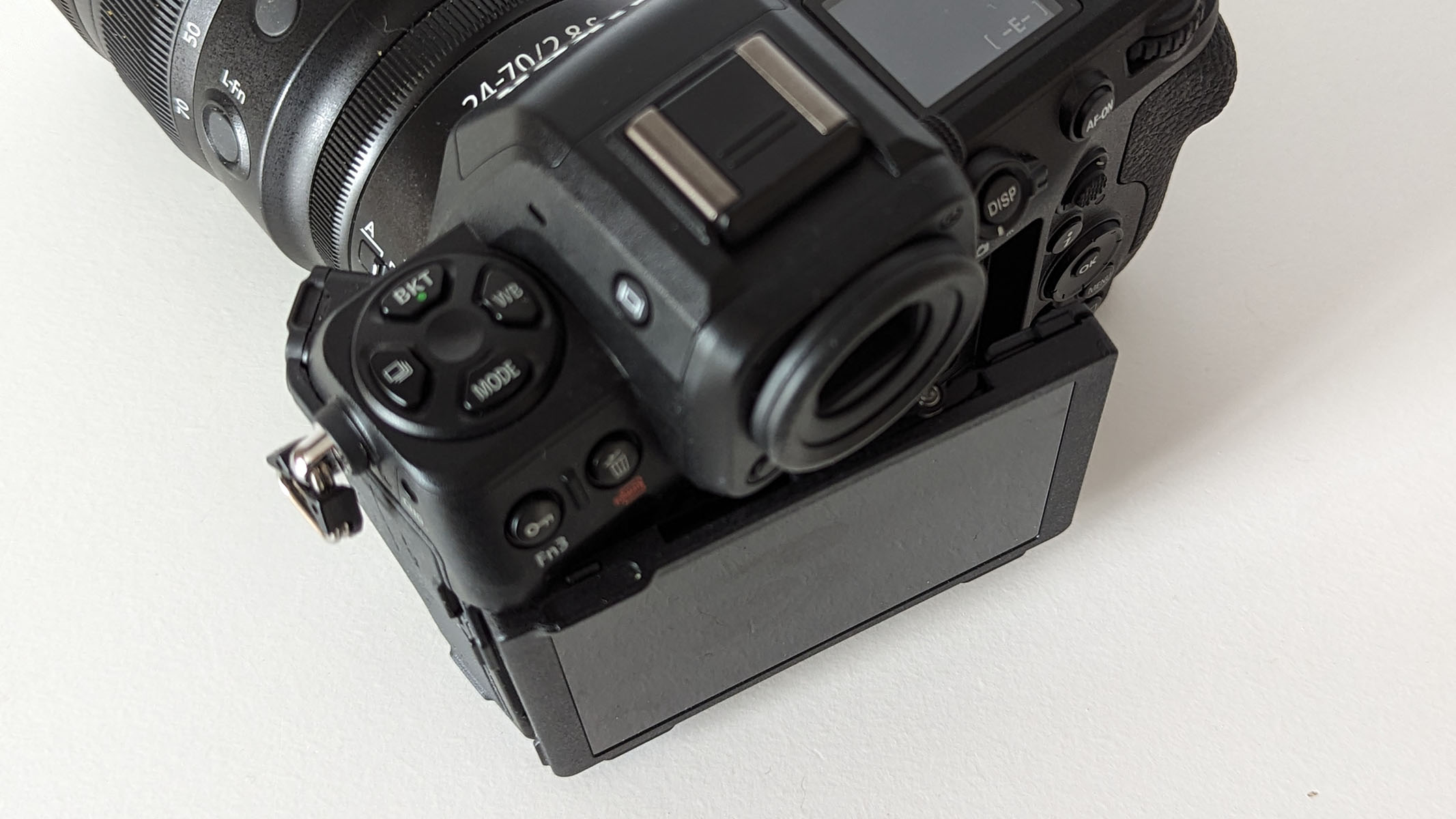
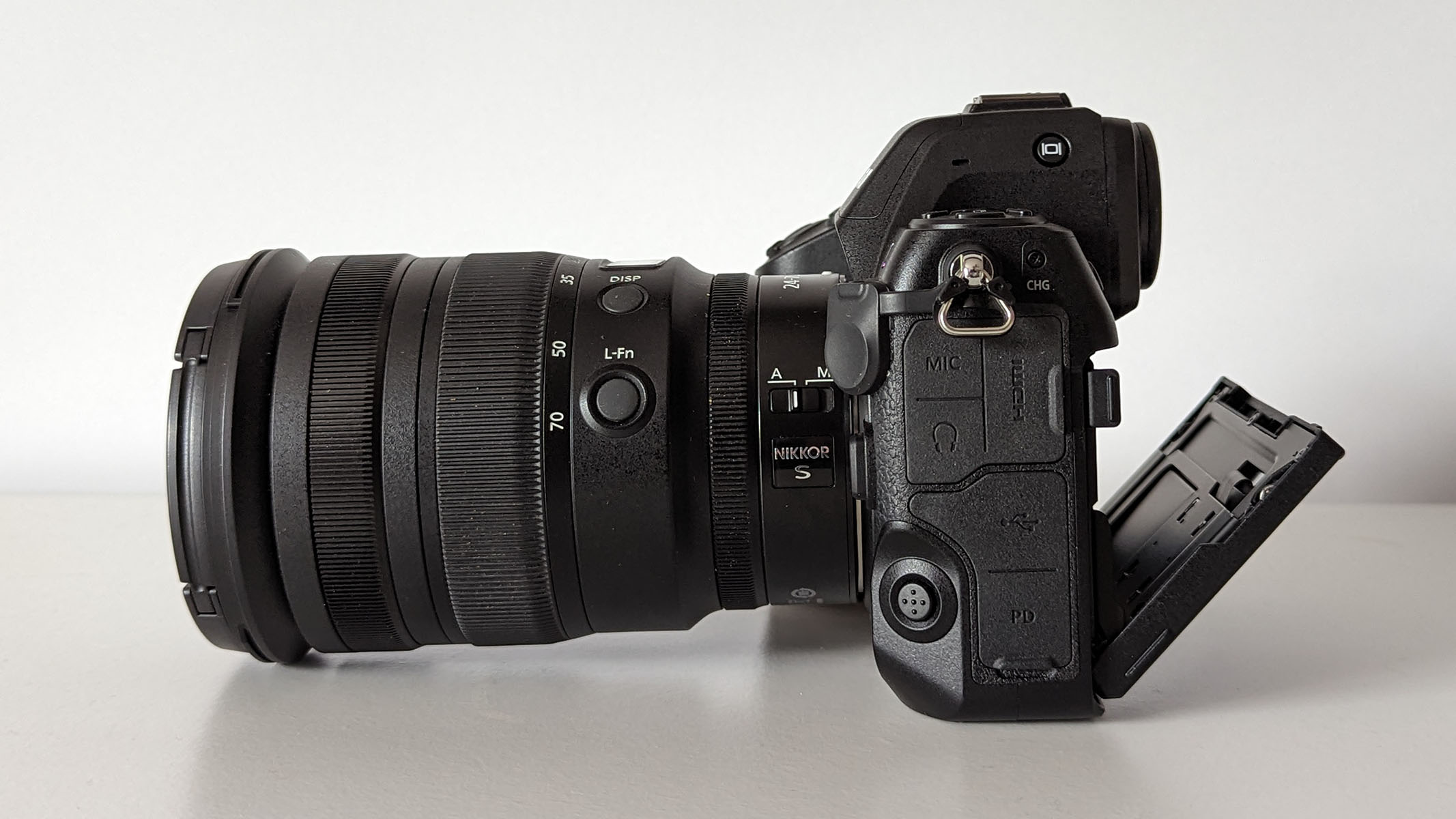
Nikon Z8: Functionality
Kit lens: Nikkor Z 24-120mm f/4 S
Best wide lens: Nikkor Z 14-24mm f/2.8 S
Best zoom lens: Nikkor Z 100-400mm f/4.5-5.6 VR S
Spare battery type: Nikon EN-EL15a, b or c
In short, there is nothing the Z8 can't do – it has been designed to conquer any and every shooting situation. The 45.7MP image sensor offers an incredible amount of resolution, and it's back-side illuminated to offer greater light-gathering capability and cleaner performance.
However, this is also a stacked sensor – meaning that it boasts lightning-fast readout speeds, delivering incredible results for stills and video. For the former, it gives you the ability to shoot at previously impossible continuous burst speeds of up to 120fps – though this comes with a few caveats.
When shooting at 120fps, the Z8 can only capture 11MP JPEGs. However, it can still shoot full-fat 45.7MP JPEGs at 30fps, or RAW files at 20fps – all with autofocus and autoexposure. Thanks to its cutting-edge image processor, the camera can record more than 1,000 RAW images at 20fps before any buffering kicks in – which is frankly astonishing!
The quick-as-a-hiccup readout speed of the stacked sensor also means that the rolling shutter phenomenon is virtually eliminated when shooting stills and video. Indeed, it's such a non-issue that Nikon hasn't even bothered to include a mechanical shutter in the Z8. It's electronic-only, boasts a blistering 1/32000 sec maximum shutter speed (which is 4 times faster than most high-end cameras!).
The camera also boasts the same flagship autofocus system found in the Z9, with subject detection algorithms for everything from humans and animals to all manner of vehicles (in fact, it even beats its big brother by incorporating a new "aircraft" mode on top of the standard "airplane" tracking).
And last but not least, the Nikon Z8 is one of the most capable cameras on the market when it comes to video, able to produce crystal clear 8K 60p as well as 4K 120p footage – all without the overheating issues and recording limits found in its rival, the Canon EOS R5.
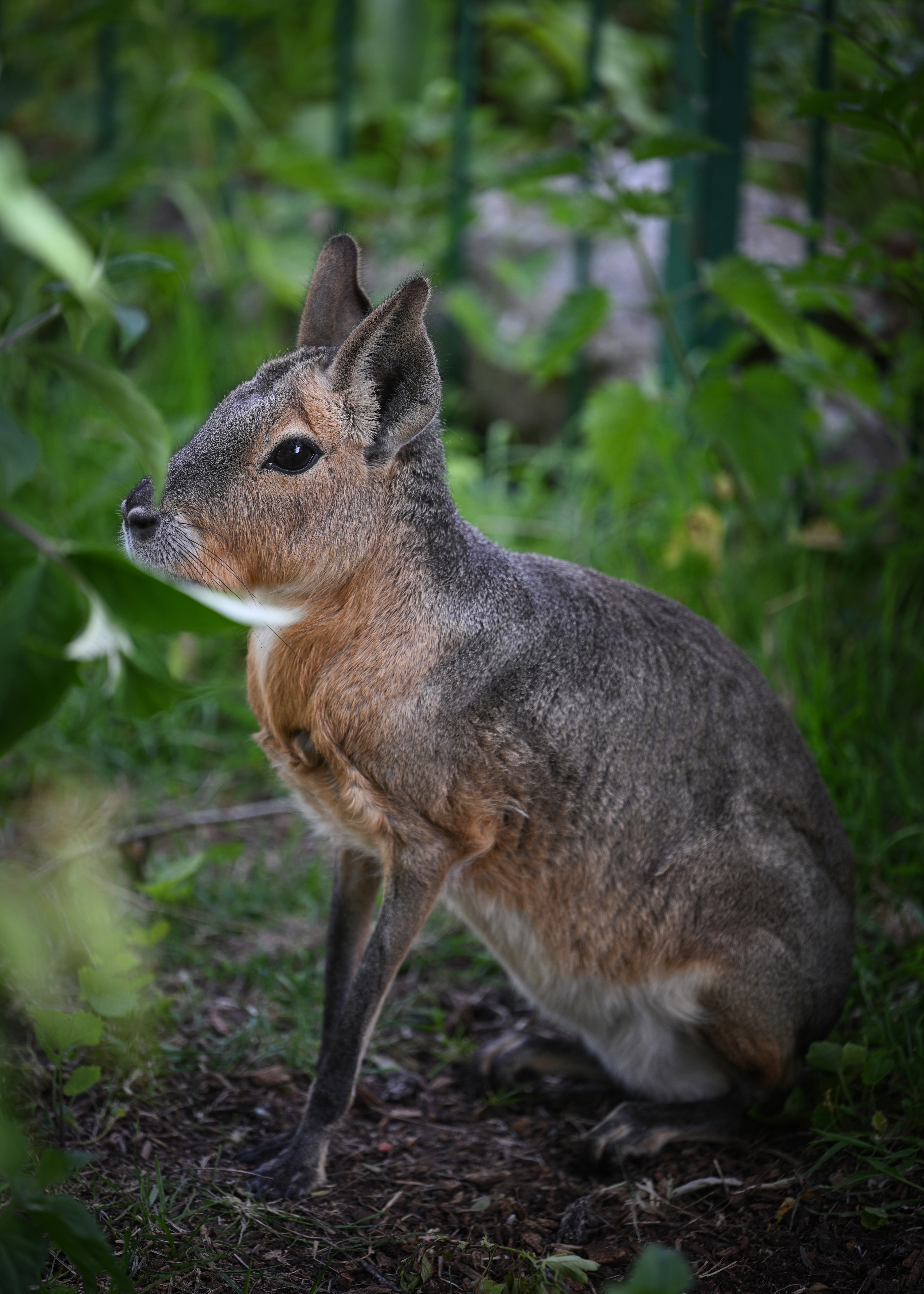
One exciting feature for astrophotographers is the night vision mode. Gone are the days of using a red flashlights and shutting our eyes every time a car goes past just to have the camera menu or image preview blast hot-white light into our eyes and ruining our night vision. Head into the custom shooting menu and navigate to d10 and we're met with Warm display color. Within it are two programmable modes to keep specific color balance settings on the rear screen and electronic viewfinder which are, by default, both set to red and to keep the screen dim.
"But now we can't see whether the color balance is true while shooting, everything is red!" we hear you say. Yes, but there are two caveats to this: one is that we should be shooting in RAW format anyway, so we can adjust this when image editing, and two, generally you'll only be checking the rear screen when setting up a composition. This would involve checking things like aperture, shutter speed and ISO, as well as monitoring the histogram to avoid dark clipping on the graph. Plus, you can just turn it off again if you truly want to check the color or brightness of the image.
Nikon Z8: Performance
The Z8 is an absolute home run for Nikon in just about every department. The 45.7MP files it produces are stunning, dripping with detail to use straight out of camera and packed with plenty of data if you prefer doing post-production. The RAW files in particular reveal just how clean the images are, coming off the new sensor; even when you abuse the ISO, you're still getting beautiful images.
The 120fps continuous shooting is hilarious to the point of Schwarzenegger-like overkill. I can't fault it, but there's no reality in which I'm ever going to use it; the 11MP JPEGs are absolutely fine, but I'm not using a 45.7MP camera to take low-res photos! I'm also not going to sit flicking through thousands more images looking for another 100 versions of the decisive moment – the 20fps RAW shooting is more than enough.
However, the slightly lower resolution, super-fast burst speeds are honed for specific photographic disciplines. This includes action photojournalism and sports journalism where the camera would be rigged up to the internet to download a constant stream of images to a team of editors. These editors are then ready to make the perfect selection to publish online or in print, where every second counts when it comes to reader traffic and print deadlines.
Where things get a little bit tricky is with the autofocus. Now, compared to just about any other camera, the Z8's AF is phenomenal. It finds, follows and focuses on subjects with spooky degrees of accuracy… 98% of the time. When I took this out to shoot wildlife, there were occasions where it faltered – and any other camera would have faltered on those same occasions. Except for the Canon EOS R5.
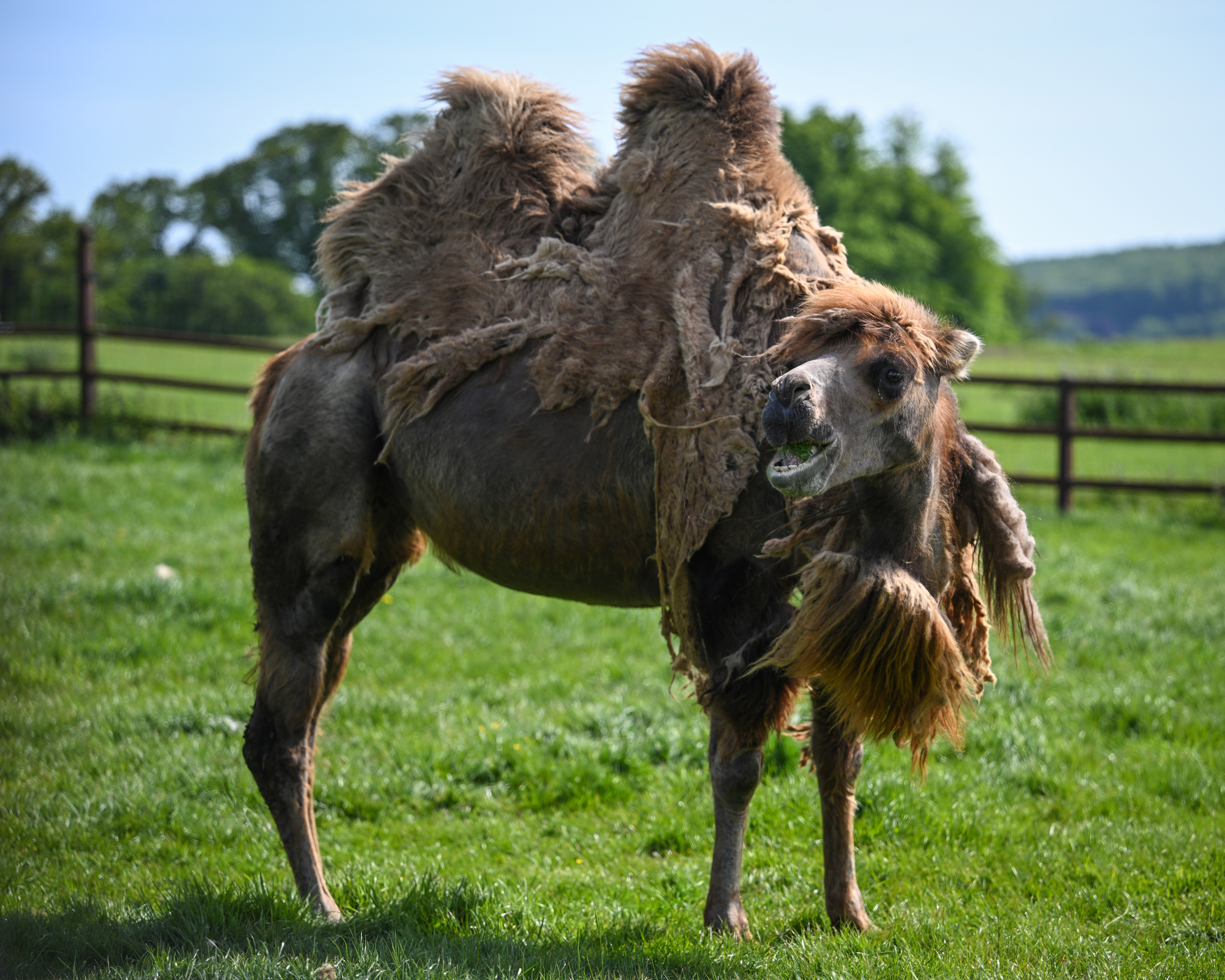
I have yet to point the R5 at a single animal, whether the AF has an algorithm for it or not, that it hasn't been able to focus on. That was not the case with the Z8, which struggled to find focus on some wild animals – and also completely failed to find a couple who were slightly obscured by foliage (in a way that the Canon doesn't struggle).
It was also less than true for me when photographing sports, as the AF is slightly twitchy and apt to jump from player to player rather than sticking on the subject you want it to. Still, we really are comparing Lebron James to Michael Jordan here – coming second is more a reflection of how good the GOAT is, rather than a failing on the part of the Z8.
The tables are turned when it comes to video, an area where the R5 has a few caveats. That's not the case with the Nikon Z8; capable of 8- or 10-bit H.265, 10-bit Apple ProRes 4:2:2 HQ and 12-bit in-camera ProRes RAW HQ, video here is of the finest quality at all resolutions (unlike the uninspiring standard 4K of the Canon). You can also capture 120 minutes of 4K 60p footage, or 90 minutes of 8K 30p – again, a far cry from the limitations of the R5.
The same AF limitations apply to video shooting, and again the lack of an articulating screen is a big misfire, but otherwise this is as much a monster when it comes to videography as it is to stills.
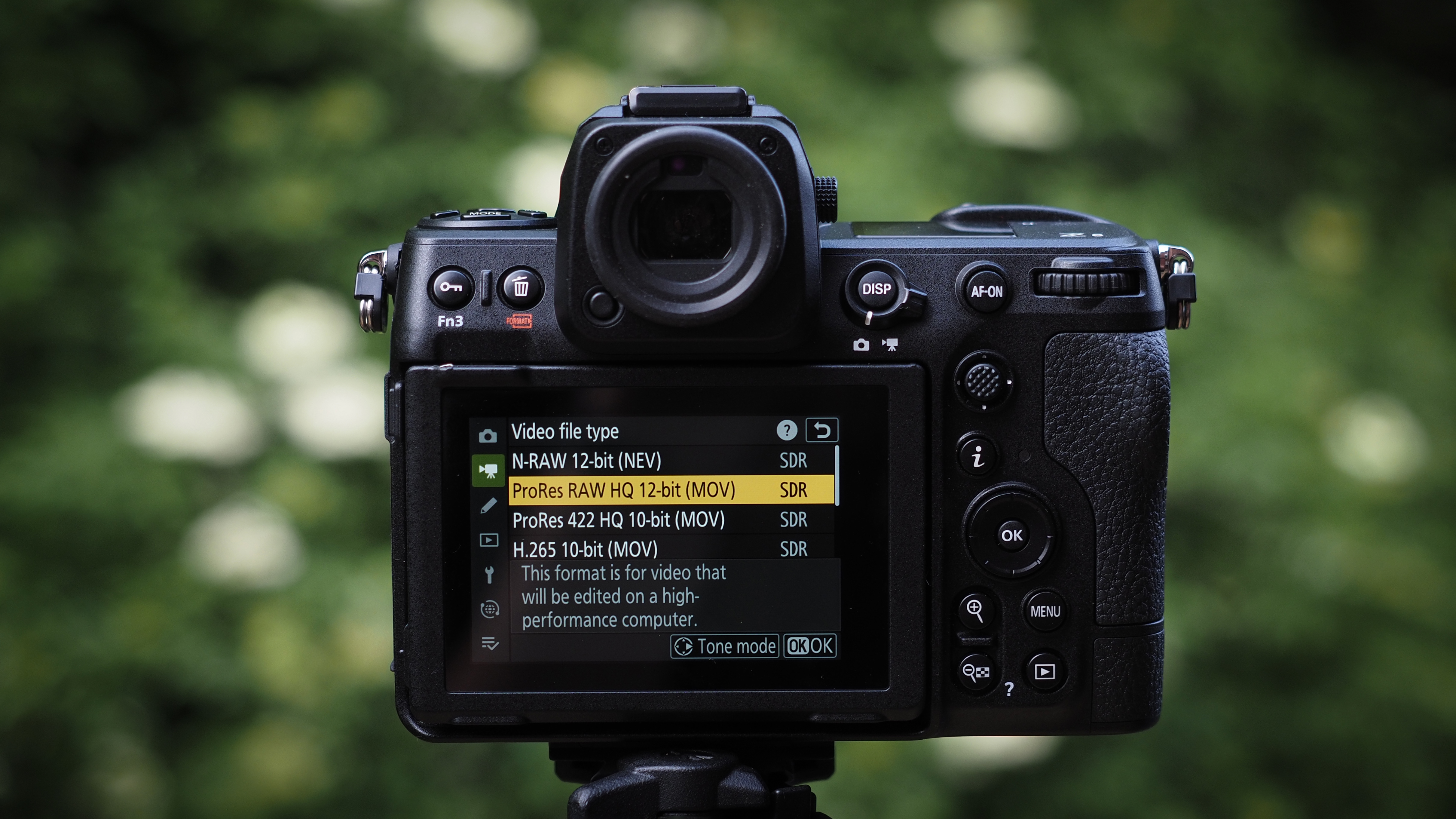
In low light photography we are all aware of just how much camera autofocusing systems struggle. As soon as twilight comes around, or when shooting in a dimly lit church or other low light venue, we boost up the ISO, slow the shutter speed and whack open the aperture just to have the autofocus hunt, whirring back and forth before giving up.
While mirrorless cameras on the whole are improving their low light AF, with some cameras dropping down to -6.5EV, the Z8 walks away with the prize offering a -9EV autofocus detection lower limit. To utilize this though, we have to turn on Starlight view (photo Lv) in d9 of the custom shooting menu. Once engaged it works both on the rear LCD screen and in the electronic viewfinder and it appears to ramp up the brightness of the screen to aid with composition in dark scenes as well.
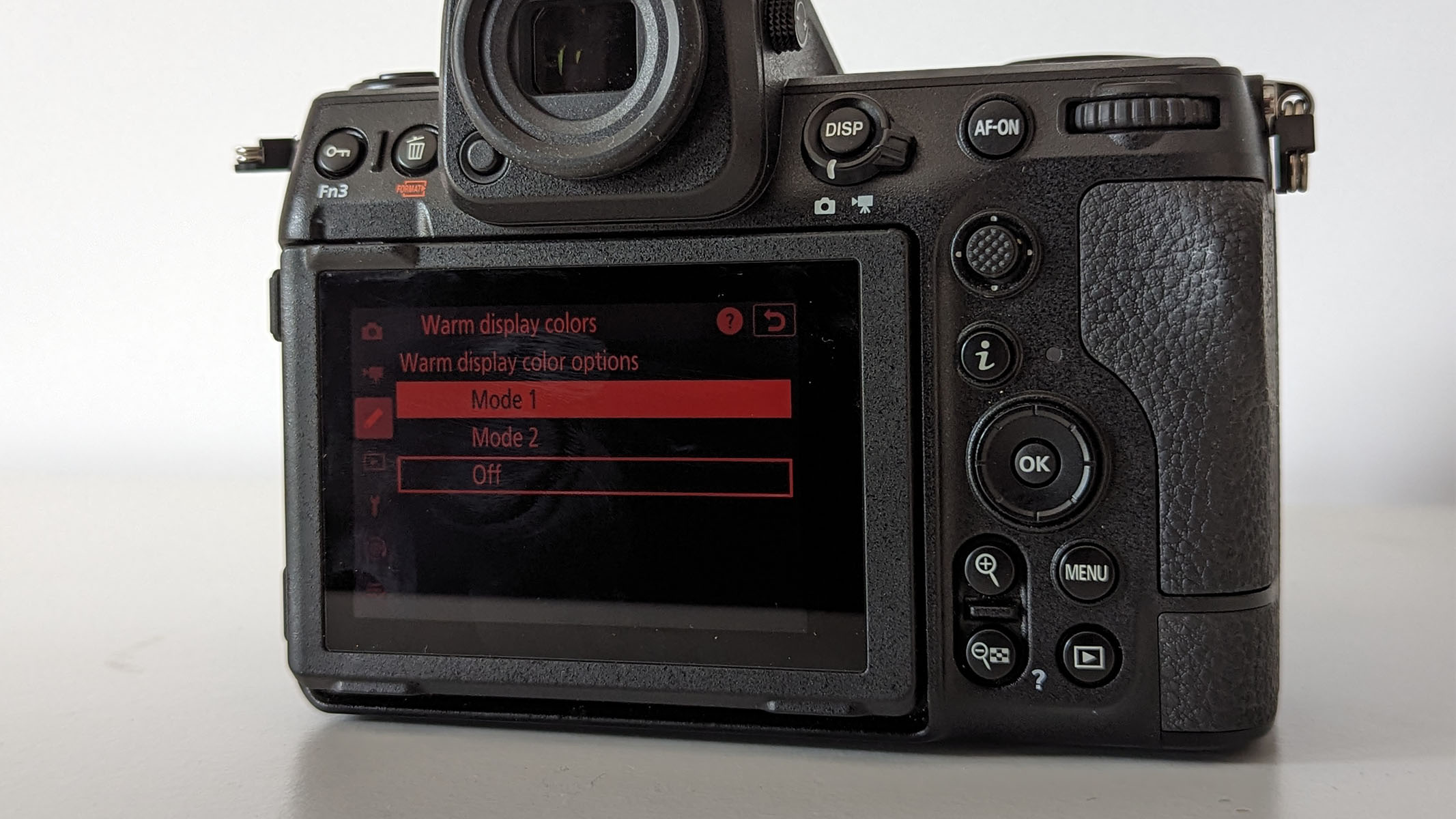
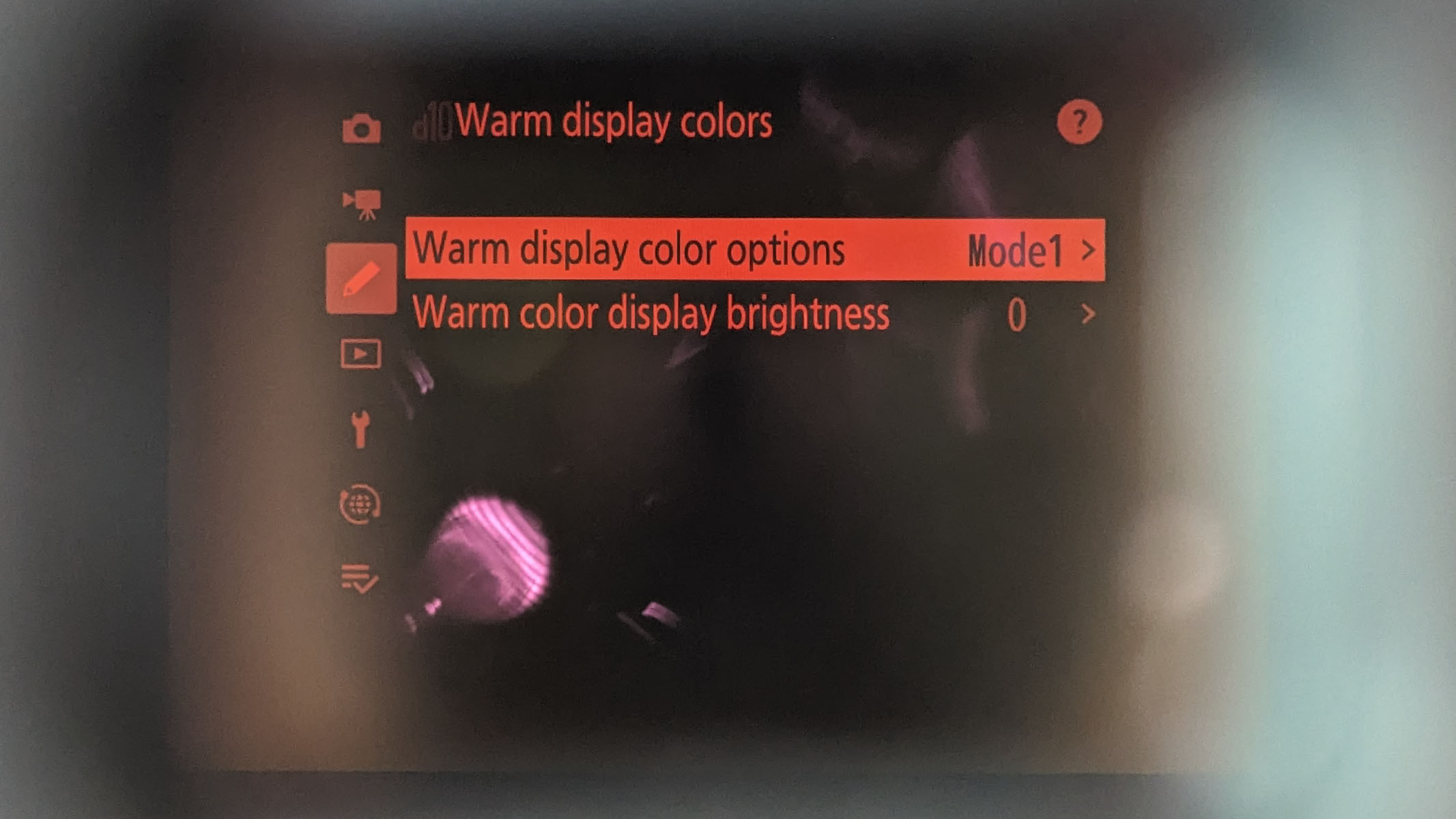
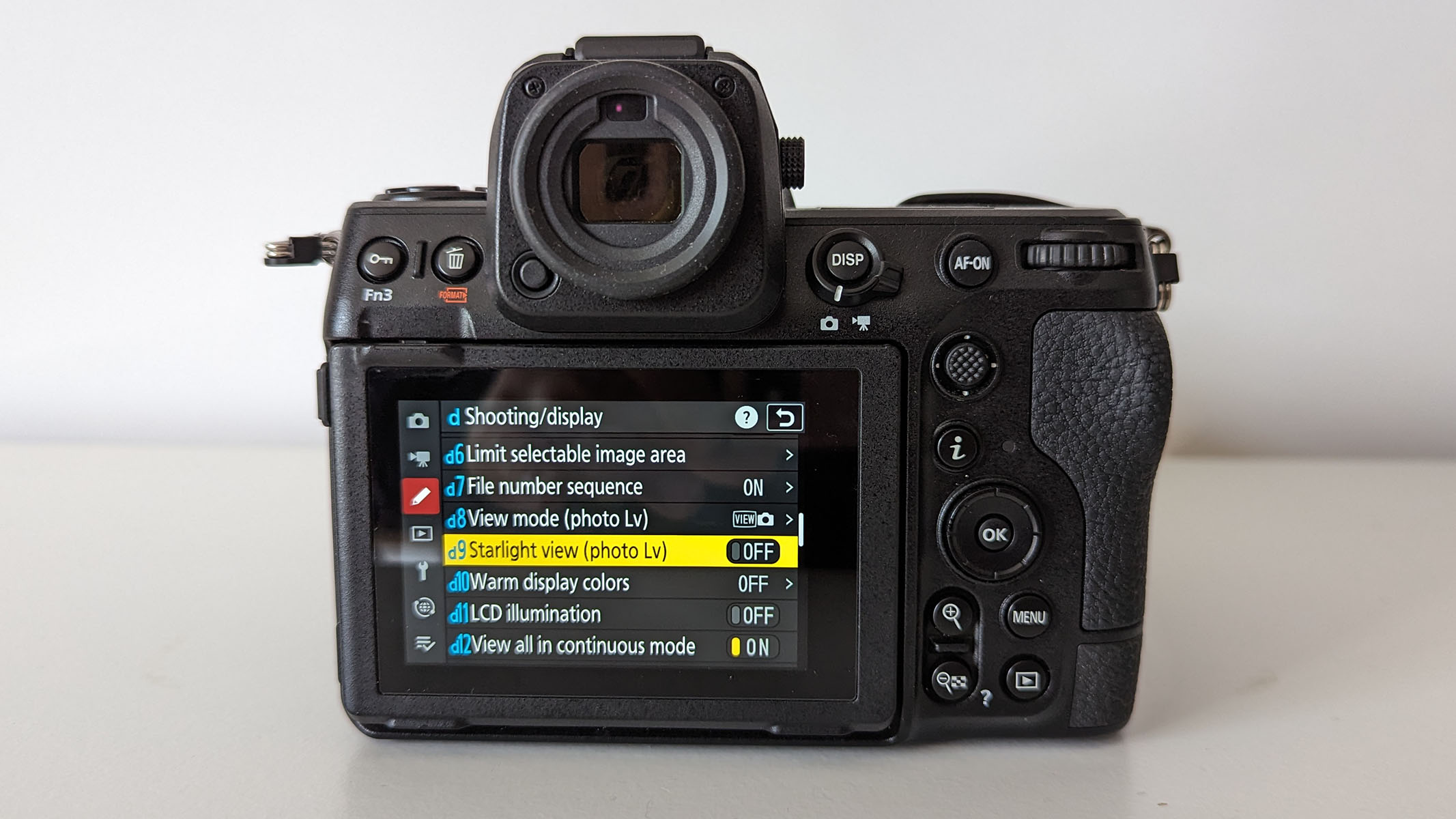
Should you buy the Nikon Z8?
Do you want flagship level performance without flagship price or bulk? Do you want Nikon's finest ever camera technology? Do you need high-res 45MP stills or 8K video? Then the Nikon Z8 is an absolutely fantastic option.
Is it the best option, though? For my money, I would actually recommend the Canon EOS R5 unless you genuinely need 120fps stills, 8K 60p video or the ability to shoot more than 20 minutes of 8K in one go.
The Z8 is a technological marvel and an unprecedented powerhouse. Were it not for a couple of gripes – namely the twitchy autofocus and the non-articulating screen – it might be the best camera I've ever used. It's cheaper than rival flagships and outpunches them in almost every category; you won't find this much power at this price anywhere else.
However, beginners and even most intermediates probably won't be able to take full advantage of this camera. Sure, if they have deep pockets this camera will last them for years to come and is a worthy purchase. But there will be so many features and settings paid for and not used by beginners or intermediate photographers that a cheaper alternative will yield results that are just as good.

If this isn't for you
The direct rival to the Z8 is the Canon EOS R5, which offers very similar specs – 45MP resolution, 20fps RAW + JPEG burst shooting, 8K 30p video – and combines them with the best autofocus system in the business.
While the Z8 is its successor, there's still plenty to love about the Nikon D850. It's a DSLR rather than mirrorless, but boasts the same full-frame 45.7MP resolution along with fantastic ISO performance at a lower price.
If you're interested in the affordability and advantages of APS-C, the Canon EOS 90D is a great option. Its 32.5MP sensor is still packed with pixels, it's pretty speedy at 10fps, and its 1.6x crop factor increases the effective focal length of your lenses – perfect for gaining extra reach when shooting things like wildlife!
The editor of Digital Camera World, James has 21 years experience as a magazine and web journalist. He has worked professionally in the photographic industry since 2014, when he started as an assistant to Damian McGillicuddy (who succeeded David Bailey as Principal Photographer for Olympus). In this time he shot for clients as diverse as Aston Martin Racing, Elinchrom and L'Oréal, in addition to shooting campaigns and product testing for Olympus, and providing training for professionals. This has led him to being a go-to expert on cameras and lenses, photographic and lighting tutorials, as well as industry analysis, news and rumors for publications such as Digital Camera Magazine, PhotoPlus: The Canon Magazine, N-Photo: The Nikon Magazine, Digital Photographer and Professional Imagemaker, as well as hosting workshops and demonstrations at The Photography Show. An Olympus (Micro Four Thirds) and Canon (full frame) shooter, he has a wealth of knowledge on cameras of all makes – and a particular fondness for vintage lenses and film cameras.
- Jase Parnell-BrookesManaging Editor, e-commerce
